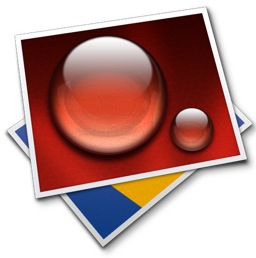
- #Focus stacking for landscape using helicon remote how to#
- #Focus stacking for landscape using helicon remote software#
Macro photography is another example of when focus stacking is an essential technique to understand. The final is sharp all the way from the first flower to background mountain. To overcome that issue, I needed to capture a total of 4 images with different focus points throughout the frame. Notice that the further away from the first flower, the more out of focus the image is
This is due to the flower only being a few centimeters away from the lens. When I focused on the first with an aperture of f/10, the next flowers were already out of focus. When there’s a big distance between the immediate foreground and distant background, only parts of the image will be sharp even at a narrow aperture. The truth is that learning a slightly more advanced technique such as focus stacking has a lot of advantages, making it well-worth to spend the little extra time in-field and in post-processing.Īs already mentioned, it’s nearly impossible to get images front-to-back sharp when using an ultra-wide-angle lens and a foreground subject only a few centimeters/inches away. Many photographers tend to avoid learning intermediate or advanced techniques because they don’t want to put in the extra effort or feel like their images are ‘good enough’. I know it sounds confusing at first but after you’ve gone through the step-by-step process and tried it for yourself, you’ll see that it’s not as hard as it sounds. Only the sharpest areas from each image are used in this blend, which results in the image having a sharp foreground, middle ground and background. These images are then imported into a photo-editor and blended/merged together. one image that focuses on the foreground and another that focuses on the background. We’ll come back to the exact step-by-step guide to focus stacking in a bit but the main idea of the technique is to capture two or more images with different focal points i.e. While there are photographers who use it for portrait and wildlife photography too, it’s less common (and a lot more difficult) to use when photographing moving subjects.
#Focus stacking for landscape using helicon remote software#
The technique requires the use of both a camera and a post-processing software such as Adobe Photoshop or Helicon Focus.įocus stacking is used within many genres of photography but it’s perhaps most commonly used in landscape and macro photography.
Focus Stacking was essential to get a sharp image due to the wide-angle lens and distance between immidiate foreground and background. Simply put, focus stacking is an intermediate technique that makes it possible to create image that are sharp from the very front and all the way to the back, no matter the distance between the closest foreground and background. Let’s take a closer look at what focus stacking for sharper images is and how you can quickly learn and implement this technique in your own workflow. It’s used by photographers of all levels and, with a little basic understanding of photography and post-processing, it’s not as difficult as one may think. You can still make adjustments if needed, and there are plenty of export options after the job is done.Focus stacking is a go-to technique for landscape photographers to achieve images that are razor-sharp from front to back.
#Focus stacking for landscape using helicon remote how to#
While you still need to know how to take photos for focus stacking (or just use the same developer’s Helicon Remote app), combining these images is pretty straightforward. Very easy to use focus stacking application You can also add a scale bar, which is useful when reference objects are missing. Here, you can use a brush to manually replace areas in the rendered image with patches more focused on any source photo. You can change a few parameters and try to find the setting that works best for your photo.Īfter rendering is complete, you can go to the Grooming tab. Source images are automatically combined using one of the selected rendering methods. Easy to use, but still supports fine-tuning


These images are then automatically combined to produce a sharply focused image. Focus stacking requires you to capture multiple images at different focal lengths, essentially trying to bring every part of the subject into focus.


 0 kommentar(er)
0 kommentar(er)
